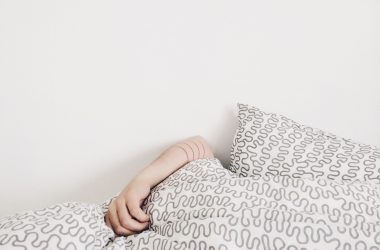Sleep disorders
What are sleep disorders
Insomnia is the most well-known sleep disorder, but it is far from the only one. Numerous people of all ages struggle with sleep disorders that affect the quality or duration of their sleep. A sleep problem is a persistent difficulty in getting enough sleep to feel good during waking hours.
Sleep problems are very common; a recent study showed that up to one in three adults claims to have sleep disorders. Sleep problems are more prevalent among women, children, and the elderly.
While we all have experienced poor sleep during stressful times, a few sleepless nights do not immediately mean sleep problems or disorders.


Insufficient quantity or lack of quality sleep leads to more than just fatigue. Sleepiness impairs cognitive abilities, which can cause learning difficulties in children, memory problems in people of all ages, personality changes, and depression.
People with sleep deprivation experience difficulties making decisions, irritability, decreased performance, and slower reaction times, putting them at risk for car accidents and work-related injuries. Lack of sleep can negatively impact life, contributing to obesity, diabetes, and heart disease.
What are the major sleep disorders?
Sleep apnea
Sleep apnea is a sleep disorder in which breathing temporarily stops during sleep. This can happen because air cannot flow properly through the nose and mouth due to physical narrowing of the airways (known as obstructive sleep apnea) or because the brain stops communicating with the muscles that control breathing (known as central sleep apnea). Both types can occur together in complex sleep apnea; generally, obstructive sleep apnea is much more common, especially in older men.
Signs of sleep apnea include loud snoring, a choking sensation during sleep, and daytime sleepiness or general fatigue.
Obstructive sleep apnea is caused by airway obstruction. Risk factors for airway obstruction include obesity, narrow airways, enlarged tonsils, or other physical abnormalities. Excessive alcohol consumption before bedtime can also promote sleep apnea by relaxing the throat muscles. Central sleep apnea is associated with strokes, opioid use, large neck circumference, and certain heart diseases. Men are at higher risk for both types of sleep apnea, but recent studies suggest that women may have sleep apnea more often than previously thought.
Restless legs syndrome
Restless legs syndrome (RLS) is a neurologically based sleep disorder in which a person feels uncomfortable sensations in the arms or legs (e.g., burning, tingling, or itching) that create an urge to move the limb(s). This can make it difficult to fall asleep or wake from sleep. RLS can significantly reduce sleep quality and is associated with anxiety, depression, and other forms of emotional stress. It occurs more frequently in women and is believed to affect 2-7% of the population.
The exact cause of RLS is not fully understood, although it is believed to have a genetic component. Risk factors include pregnancy, age, low iron levels in the blood, and genetic predisposition. Certain medications, especially those affecting dopamine, also increase the risk.
Sleepwalking and sleep talking
Sleepwalking (also known as somnambulism) and sleep talking are related sleep disorders classified as parasomnias, or abnormal behaviors during sleep.
Sleepwalking, during which a person gets out of bed, walks around, and may even perform complex tasks, usually occurs during non-REM sleep. It is more common in children but also affects some adults. A sleepwalker may have their eyes open, speak, or otherwise appear awake, but they will not remember the episode the next morning. Sleepwalking is generally harmless but can be concerning for those sharing the space. In rare cases, a person may leave their home or even drive, and if not addressed, it can be dangerous.
Sleep talking can occur during both REM and non-REM sleep. A sleeping person may speak in full sentences, single words, or complete gibberish. Sleep talking itself generally does not negatively affect sleep quality, but it can disturb bed partners. It can also be a symptom of another sleep disorder, such as night terrors. Like sleepwalking, sleep talking is more common in children than adults; the disorder likely has a genetic component, as it tends to run in families.
The exact cause of sleepwalking is unknown. Certain factors, such as sleep deprivation, illness, anxiety, or medication use, can trigger episodes of sleepwalking for various reasons.
Sleep paralysis
The term “sleep paralysis” refers to a state in which a person hovers between REM sleep and wakefulness, either upon waking or falling asleep. The person is usually somewhat aware but, typical of REM sleep, unable to move or speak. In many cases, hallucinations occur. Sleep paralysis usually lasts from a few seconds to a few minutes.
While a large number of people experience sleep paralysis occasionally, a much smaller number—estimated at 5-8% of the population—experience episodes regularly. Sleep paralysis, though generally considered harmless, can be disturbing to the person. Those who experience frequent episodes may start to fear going to bed or notice a drastic decline in sleep quality due to increased anxiety.
It is believed that the brain wakes up from REM sleep before the body does during sleep paralysis. However, what exactly causes this mismatch is not fully understood. Some factors that seem to trigger episodes of sleep paralysis include sleep deprivation, jet lag, disrupted sleep-wake cycles, or heightened stress (including stress from a previous episode of sleep paralysis). Narcolepsy can also be an underlying cause of sleep paralysis. It is believed that genetics play a role in recurring cases.
Narcolepsy
Narcolepsy is a sleep disorder in which a person frequently experiences an overwhelming urge to sleep during the day, causing them to fall asleep involuntarily or seemingly without warning. In some cases, a person may experience cataplexy—a sudden loss of muscle strength that can cause collapse—or vivid hallucinations during or after an episode. Narcolepsy is a neurological disorder that is usually lifelong. It typically begins in childhood or early adulthood, although it can appear later in life.
Narcolepsy has been shown to respond to certain stimulant medications such as methylphenidate or amphetamines, as well as some antidepressants that can reduce daytime sleepiness. Lifestyle changes, such as increasing exercise, scheduling naps, and avoiding caffeine and alcohol, have also had positive effects on many sufferers.
When we worry about sleep itself, we can often create or exacerbate sleep problems. For example, if we worry that we are not getting the typical eight hours of sleep a night and think something is wrong, this worry itself can cause poor sleep at night.
Sources used
mentalhelp.net/articles/sleep-disorders/
psychologytoday.com/intl/basics/sleep/other-sleep-disorders
